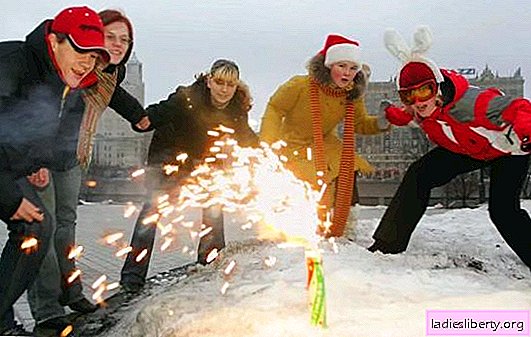
Broken bones, dislocations, sprains, or bruises are injuries that are almost always painful. The distinction of a fracture, sprain, or bruise is often not obvious to the lay person. Dislocation is an injury that should always be assessed and treated in a hospital. When using pyrotechnics, bruises and puncture wounds are most common. How to help a person who suffered from pyrotechnics?
What are the symptoms of a fracture or other injury?
There are two types of fractures: closed and open. When closed, the skin is not damaged, then when open, on the contrary. Symptoms of a bone fracture:
- severe pain, even at rest;
- limited movement of the area of the damaged body;
- swelling and bruising;
- noise in the bones during movement;
- skin damage from bone fragments.
Bruises, bruises, wounds, or similar injuries are accompanied by pain, burning, or inflammation. Sometimes the body temperature rises and chills occur.
Fracture First Aid Measures
It is not recommended to try to adjust the limb yourself, as this can lead to additional injuries.
It is necessary to act as follows:
- Keep calm.
- Eliminate jewelry (bracelets, rings, watches) from the affected limb.
- Soothe injured limb.
- Prevent the occurrence of edema.
- Cool the affected area. Do not apply “cold packs" or ice directly to the skin.
- Open tight-fitting clothing.
- Cover the victim with a blanket (especially in the cold season).
In case of multiple fractures, an ambulance must be called. In medical jargon, bruising is also called contusion. An injury from pyrotechnics often leads to leakage of blood from damaged blood vessels and the accumulation of tissue fluid. Bruised bones cause a bruise in the skin. A bruise is sometimes as painful as a bone fracture. Only with the help of an x-ray can a bone fracture be clearly excluded. Small bruises can be treated with cooling or anti-inflammatory ointments.
Sprain: what to do?
With sprain, the joint moves beyond the normal range of motion. This "excessive movement" causes deformation of small fibers and articular tissue. Symptoms of pain depend on the degree of joint distension.
With light stretching, the elasticity of the joint is practically not affected, while strong joint causes swelling for a short time.
The ankle joint, knee and wrist are most often affected. First aid measures are no different. Small stretches can be processed by cooling.
Dislocation: can I correct it myself?
Dislocation is an injury that should always be assessed and treated in a hospital. With this trauma, contact between the various articular surfaces is lost. The result is massive sprain and damage to the joint capsule. Symptoms - restriction of movement, severe pain and abnormal position of the joints.
First aid measures are limited to the immobilization of the joint (for example, a scarf or blanket).
In no case should you try to straighten the joint!
Such an injury should be treated as quickly as possible in the hospital, as there is a risk of damage to the nerves and blood vessels.
Tearing a fabric from a firecracker: how to provide first aid?
Torn tissue has rough edges, so it is easily infected. It is recommended that you visit a doctor who can determine how deep the injury is. As a first measure, it is recommended to clean the wound well and disinfect it. Then a compression dressing should be applied.
Knives, broken glass, parts of pyrotechnics and other sharp objects are the cause of puncture wounds. Such injuries should be immediately examined and treated by a doctor. Even if the wound does not create a dangerous impression on the outside, it can be deep and cause dangerous internal bleeding. The risk of infection is very high, since microbes penetrate into the deeper layers of the tissue.
It is forbidden to remove foreign objects from the wound without consulting a doctor.
Minor pyrotechnic burns
Small burns can be cooled with running water. Then it is recommended to apply the gel from the pharmacy. If there are bubbles, it is important to consult a doctor.
If larger parts of the body are affected (larger than the palm), dial 112.
Heavy bleeding can be life threatening. It is recommended to immediately call an emergency doctor. If possible, stop bleeding with a dressing.
It is forbidden to strongly bandage the limb, as this can lead to gangrene.












